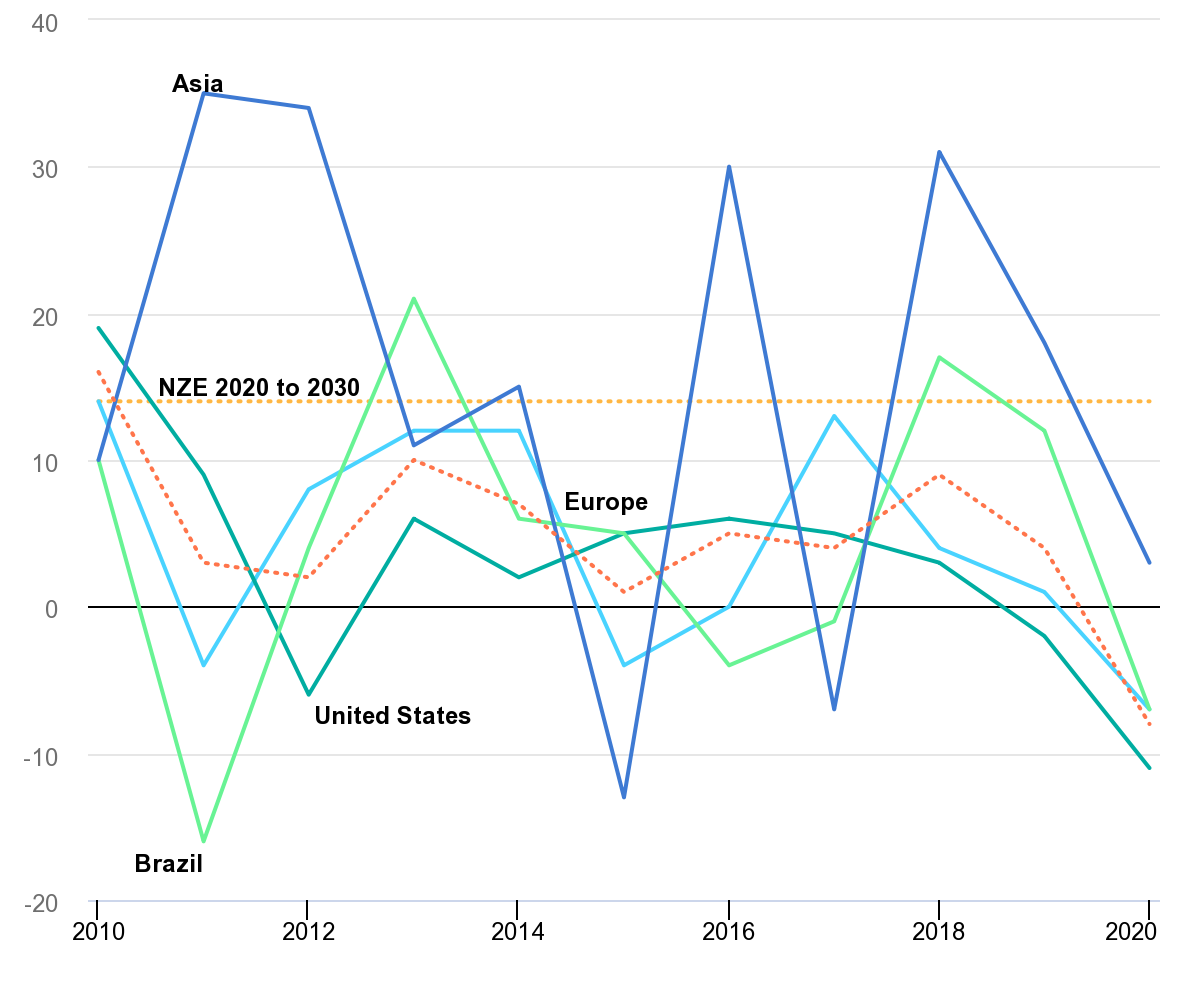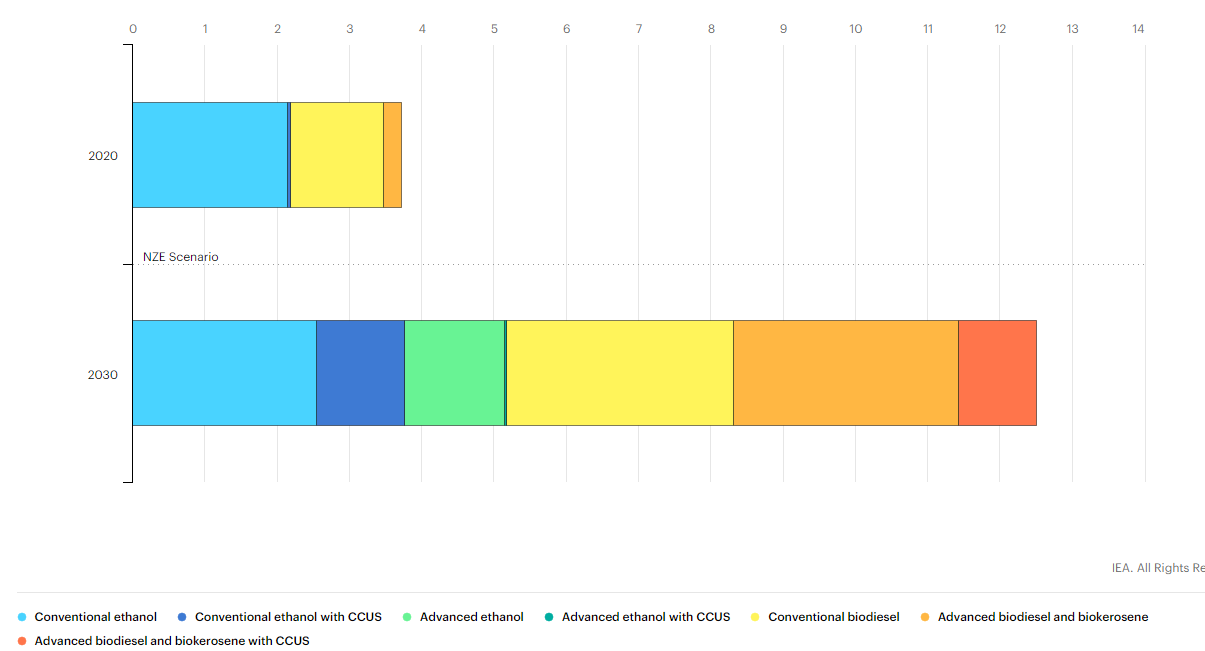IEA, Auto News, ET Auto

New Delhi:
While highway transportation continues to be a single of the biggest contributors of greenhouse gas (GHG) emissions, the highway to decarbonisation can be noticed diversifying into a number of choices, a single of which may well be discovering alternate options to fossil fuels in other resources like biofuels.According to the Global Vitality Agency (IEA) tracking report introduced through the COP26 local climate convention in Glasgow, biofuels account for only 3% of transportation gasoline demand globally, and are not on keep track of to achieve the Web Zero trajectory.
From 2019 to 2020, transportation biofuel demand contracted eight% mainly thanks to mobility constraints resulting from the Covid-19 pandemic, which also prompted some governments to delay coverage implementation.
“Although demand is anticipated to return to the 2019 level in 2021, soaring commodity prices in 2021, such as for feedstocks such as soy and corn, have extended coverage delays in a number of important countries,” the report says.
In between 2010 and 2019, international biofuel usage expanded 5% every year on common. The Web Zero Emissions by 2050 State of affairs involves a substantially better once-a-year common advancement of 14% by 2030. While acquiring this will call for significantly much better guidelines, similar enlargement experienced been realized in some countries and regions in the past.
IEA noted that Europe, North The united states and a number of countries in Asia are thinking about or implementing guidelines that could speed up biofuel demand.

India’s contribution
In India, the govt is targeting 20% ethanol blending by 2025, a focus on originally slated for 2030. It as a result proposes to additional than double its ethanol production capacity.
In September, Union minister Nitin Gadkari reported India will make it mandatory for automobile makers to provide autos operating 100% on biofuels in the future 6 months. According to him, this will be considerably less polluting, price-effective for buyers and saves foreign exchange also. He also reported that the point out-run oil marketing and advertising businesses have previously been ordered to provide biofuels at the identical amenities as the a single offering petrol and diesel.
A litre of bioethanol costs INR sixty five as in contrast to about INR 100 for petrol. Despite being the 3rd-most significant person of transportation vehicles in the environment, about 70% of India’s transportation electricity requirements are fulfilled by importing fossil fuels.
What can the governments do?
According to the IEA, even although biofuel demand and production are expanding globally, it is not at a pace dependable with the Web Zero State of affairs. Countrywide governments can make use of a combination of regulatory measures such as mandates, lower-carbon gasoline requirements and GHG intensity targets, blended with carbon pricing and economical incentives, to aid increase biofuel demand.
Most biofuels are at present eaten as a result of blending at lower percentages with fossil fuels (usually considerably less than 10% by volume or device of electricity). Policymakers ought to locate methods to persuade the use of versatile-gasoline autos and drop-in biofuels to let better shares of sustainable biofuels to swap gasoline or diesel.
Sustainability governance is also crucial to ensure that better biofuel usage delivers tangible social, financial and environmental added benefits, such as lifecycle GHG emission reductions. Adherence to sustainability requirements ought to be verified by 3rd-occasion certification of biofuel offer chains.
The European Union, the United States and Brazil have proven frameworks to codify some features of biofuel sustainability, but other countries must also ensure that demanding sustainability governance is linked to biofuel coverage help, IEA reported.
Waste and residue-derived fuels
Now, utilized cooking oil and waste animal fat offer the the greater part of non-foodstuff-crop feedstocks for biofuel production. Specified that these feedstocks are limited, on the other hand, new technologies will want to be commercialised to broaden non-foodstuff-crop biofuel production.
For instance, cellulosic ethanol and biomass-to-liquids technologies use non-foodstuff feedstocks to make lower-carbon biofuels for use in the transportation sector. While the common production price is even now double to triple that of fossil gasoline equivalents, it could drop by as substantially as 27% about the future 10 years, the report says.

*CCUS= carbon capture, utilisation and storage
NZE= Web Zero Emissions by 2050 State of affairs
Guidelines are also necessary to aid the technological understanding and production scale-up vital to decrease costs simply because superior biofuel investment and production costs are at present superior.
Biofuels made from wastes, residues and devoted crops that do not contend with foodstuff crops (such as crops grown on marginal land) will make up forty five% of biofuels eaten in 2030 in the Web Zero State of affairs, up from an approximated seven% in 2020 , the report adds.
Also Go through:






